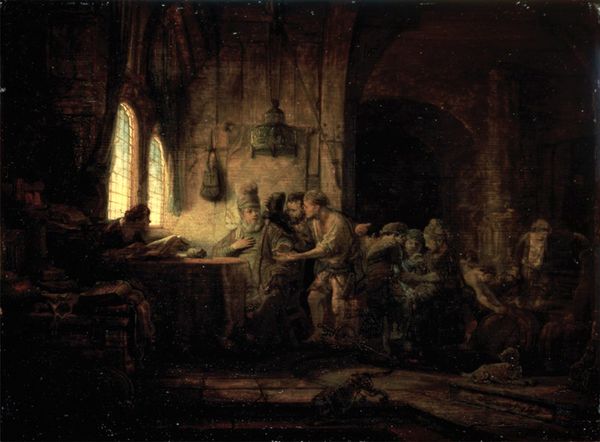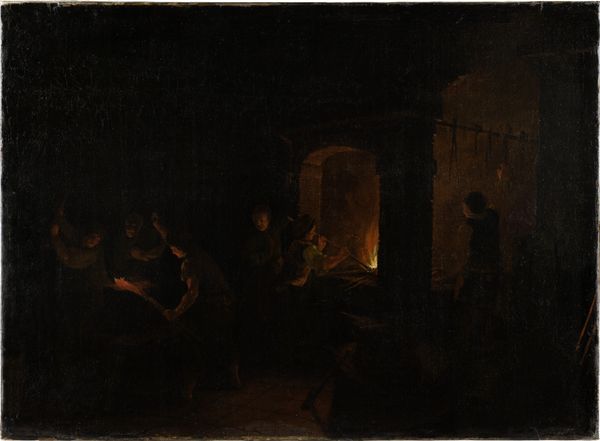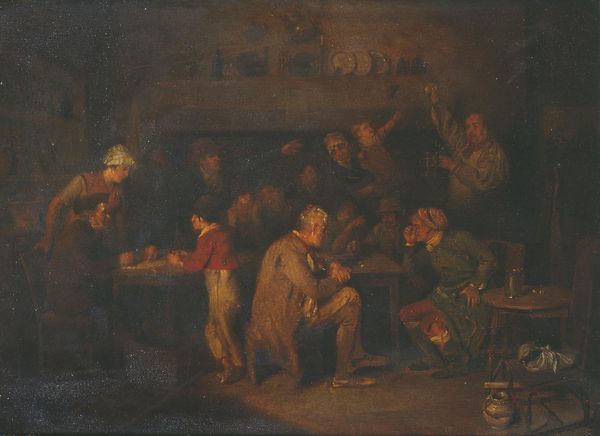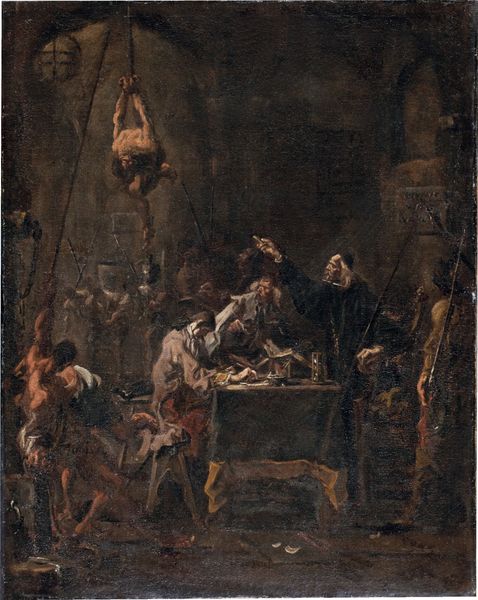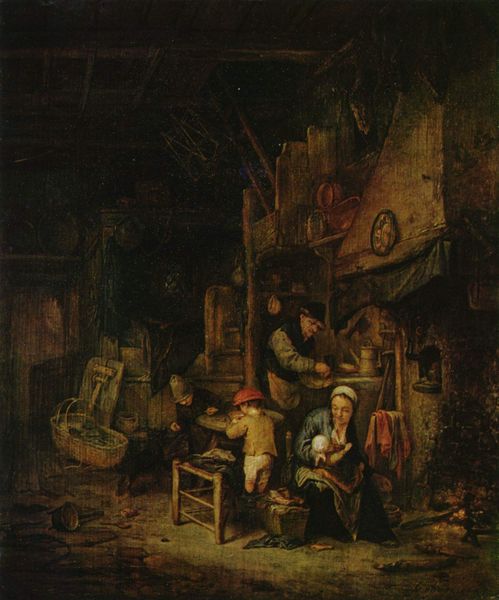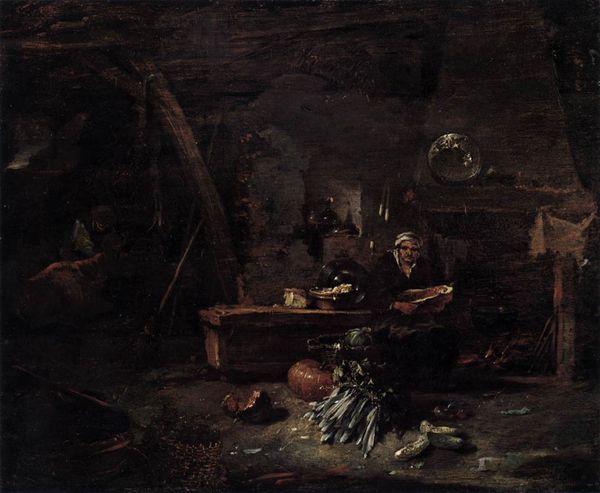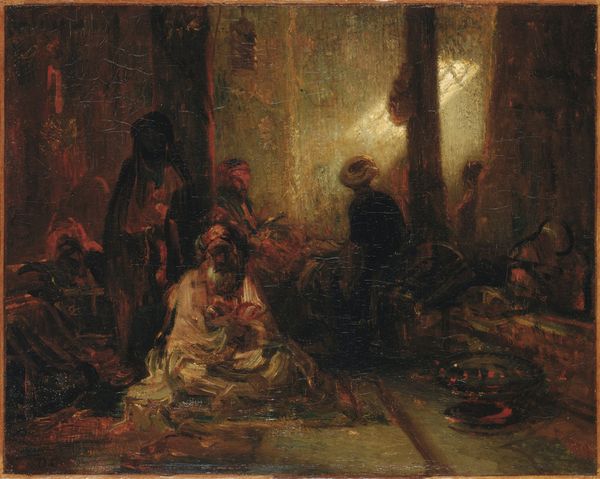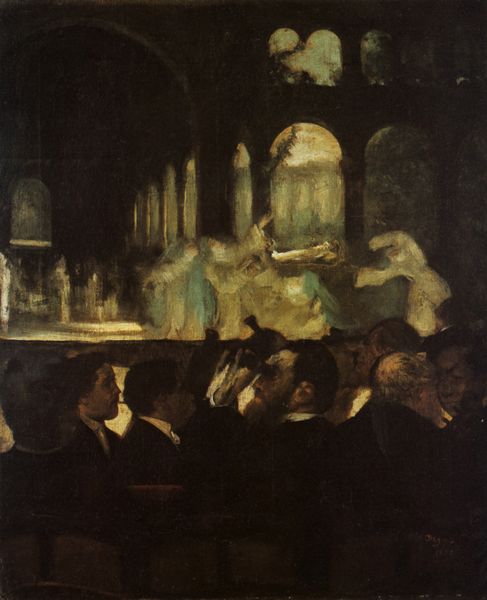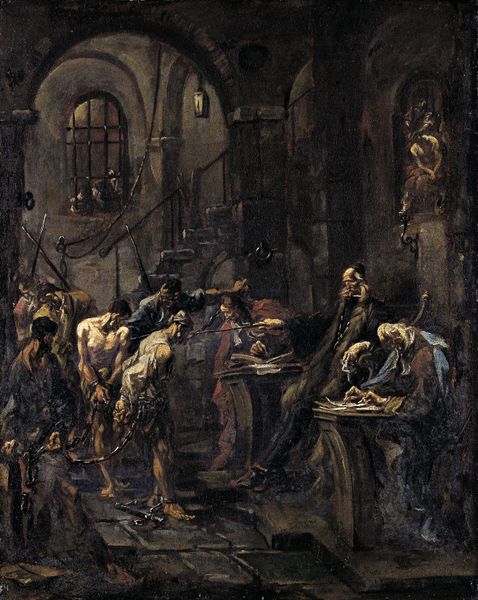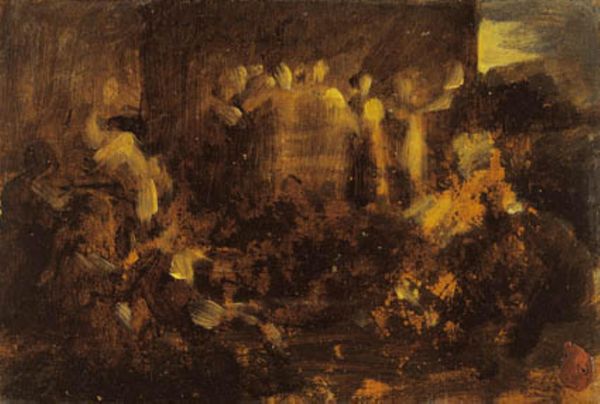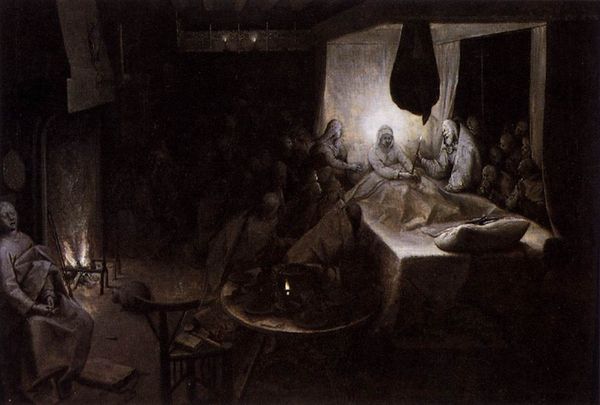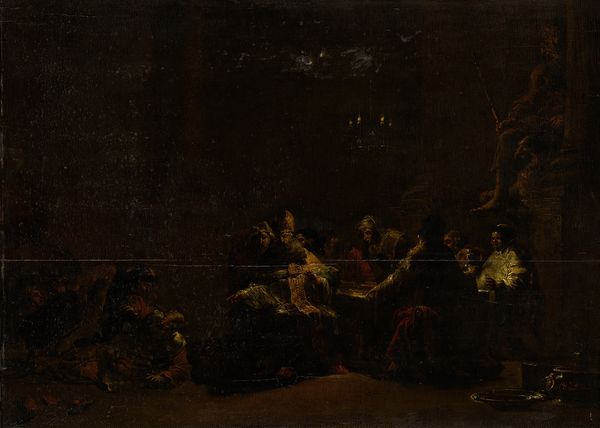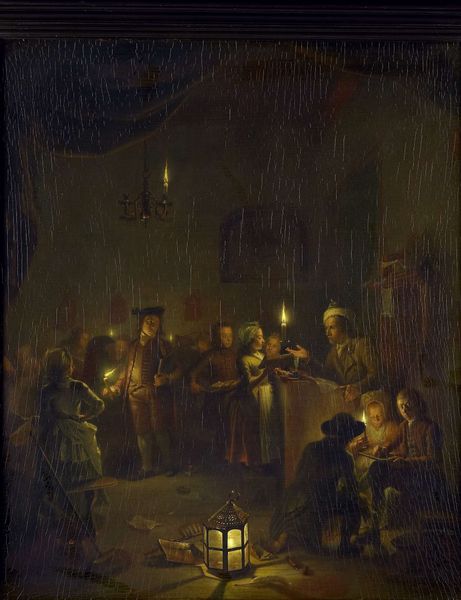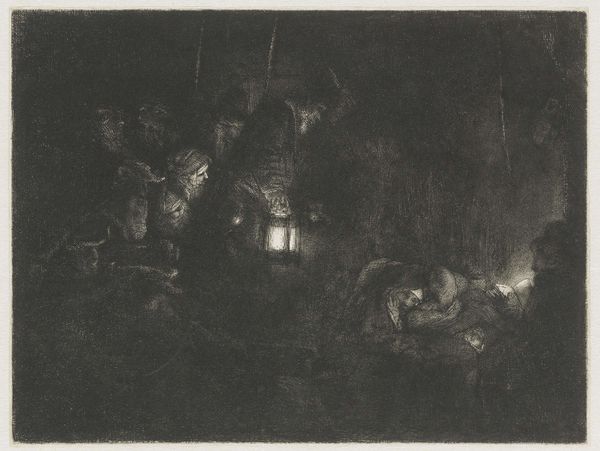
painting, oil-paint
#
allegory
#
baroque
#
painting
#
oil-paint
#
chiaroscuro
#
genre-painting
#
history-painting
Copyright: Public domain
Curator: The first impression is certainly the drama of light. This composition is built around that singular source. Editor: Indeed. We are looking at Adam Elsheimer's oil painting, “Minerva as Patroness of Arts and Sciences," from about 1605. Elsheimer truly masters chiaroscuro in this piece. The way the light illuminates the figures in contrast to the deep shadows. Curator: Right. Beyond just the literal depiction of light, note how the artist constructs the whole space, the emotional core of the artwork with gradations of dark and light tonalities. Editor: Observe the scholarly gathering bathed in candlelight. A globe, books...these immediately suggest knowledge, and intellectual pursuit, almost certainly pointing to its allegorical dimensions. Do you think the figures are generalized, or could they be specific portraits? Curator: Without more biographical insight, it is nearly impossible to identify portraits confidently. More significant to me is observing the composition’s arrangement. The artist's positioning creates zones of interest. Editor: Yes, zones! A Minerva figure presides, overseeing all this industrious study. Minerva embodies wisdom, strategic warfare, and crafts. Here, in a context overflowing with scientific instruments and artistic tools, the message appears clear, right? Curator: Perhaps even consider Minerva's helmet which is featured within a traditional symbolic understanding which connotes prudence as well as foresight? The iconographic references add substantial layering. Editor: So, how do you interpret this combination of allegory with these techniques? Curator: As a unified construction which showcases a specific technique, framing and tonality over traditional interpretations. Editor: It seems that a visual inventory, and examination into allegories have really proven this paintings sophistication as an embodiment of knowledge and illumination, literally and figuratively.
Comments
No comments
Be the first to comment and join the conversation on the ultimate creative platform.
